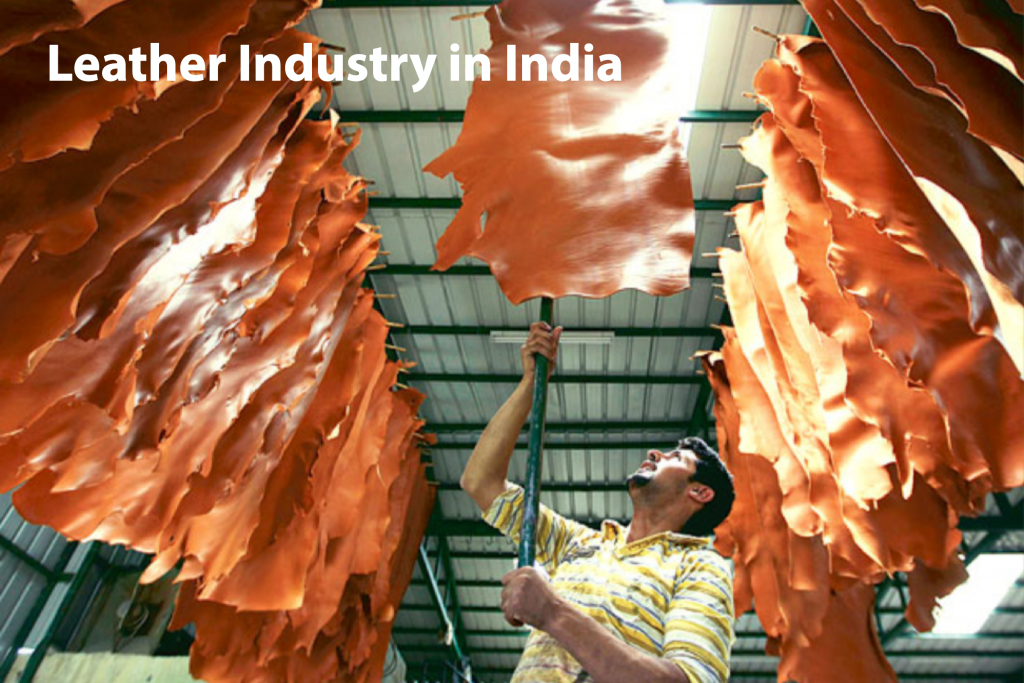

Overview
Leather is one of the most widely traded commodities globally. It accounts for around 12.9% of the world’s leather production of hides/skins and handles a robust annual production of about 3 bn sq. ft. of leather. The growth in demand for leather is driven by the fashion industry, especially footwear. India accounts for 9% of the world’s footwear production. Apart from this, furniture and interior design industries, as well as the automotive industry also demand leather. The leather industry is known for its consistency in high export earnings and it is among the top ten foreign exchange earners for the country.
The leather and leather products industry is one of the oldest manufacturing industries in India. The Indian leather industry provides employment to more than 4 million people in the country, mostly from the weaker sections of the society. Women employment is predominant in leather products industry with about 30% share. The leather industry in India has one of the youngest workforces with 55% of the workforce below 35 years of age. The Leather industry has the tendency to generate 250 jobs for every $ 0.2 mn investment.
Over the years the leather industry in India has undergone drastic change from being a mere exporter of raw materials in the early 60’s and 70’s to now becoming an exporter of finished, value-added leather products. The main reason behind the transformation is the several policy initiatives taken by the government of India. The proactive government initiatives have yielded quick and improved results. Thanks to the government efforts today, the Indian leather industry has attained a prominent place in the Indian export and has made the industry one of the top 7 industries that earn foreign exchange for the country.
Since India adopted the globalization and liberalized economic policies in 1991, the leather industry has flourished consistently in several ways and has contributed heavily to the Indian exchequer. Though the industry has developed, it still has great potential for more growth and investments. Investing in Indian leather industry is particularly advantageous because the industry is poised to grow further and achieve a major share in the global trading market.
The government of India in its Foreign Trade Policy for 2000–2009 has identified the leather sector as a focus sector in view of its immense potential for export growth and generation of employment generation prospects.
The growth of the industry is driven by the following factors:
- Raw material availability: 3 bn sq ft. of leather produced annually
- Youth power: 55% of the workforce below the age of 35
- Market advantage: The domestic market for fashion accessories to double
- High growth potential on exports: Capacity modernization coupled with a favorable investment climate
- Favorable government support: Assistance to states for infrastructure development of exports
Investment opportunities
Investment opportunities in the leather industry lie in different segments related to the industry, which include tanning and finishing of leather products, manufacturing of leather garments, manufacturing of leather footwear and footwear parts, and manufacturing of leather goods, such as harness and saddlery amongst a host of other opportunities.
Amongst all the industries mentioned above the footwear industry has the greatest potential. India produces approximately 700 million pairs of leather footwear every year and accounts for an 18% share of the total Indian leather export.
After footwear stands manufacturing of leather good, such as wallets, travel wares, belts, and handbags.
India is endowed with abundant raw materials required for the industry to grow. India has a huge population of cattle. India accounts for 21% of the world’s cattle and buffalo and 11% of the world’s goat and sheep population. Apart from the easy availability of raw materials, India has abundant supply of skilled manpower, world-class technology, competent and favorable environmental standards, and the devoted support of allied industries.
Exports of leather products in India
![]() Second largest producer of footwear and leather garments in the world
Second largest producer of footwear and leather garments in the world
![]() Second largest exporter of leather garments in the world
Second largest exporter of leather garments in the world
![]() Fifth largest exporter of leather goods & accessories in the world
Fifth largest exporter of leather goods & accessories in the world
Exports of leather and leather products touched $ 5.74 bn during 2017-18. Exports are segmented as:
- Footwear export accounts for 49.23% share. Product mix with gents (55%), followed by ladies (35%) and children (10%). With an annual production of 2257 mn pairs, a huge domestic retail market exists with 2021 mn pairs (90%).
- Leather garments industry: Annual production capacity of 16 mn pieces. 9.04% share of India’s total leather export.
- Leather good and accessories industry including saddlery and harness: Accounts for 23.79% share for leather goods and around 2.7% for saddlery and harness. The annual production capacity of 63 mn pieces of leather articles, 52 mn pairs of Industrial gloves and 12.5 mn pieces of harness and saddlery items
- Finished leather stands at 15.2%. Tanning industry accounts for an annual production of about 3 bn sq.ft
References:
- Leather Industry And Exports // https://www.ibef.org/
- Sector: Leather // https://www.investindia.gov.in/
- Indian Leather Industry // https://www.indianmirror.com/



